Q
Does the Subaru Crosstrek have a 360 camera?
Based on the current configuration information of the Subaru Crosstrek in the Malaysian market, the 360-degree panoramic camera system is not standard on this model. However, some high - end versions may be equipped with auxiliary driving features such as a rear - view camera and blind - spot monitoring. For consumers who value a panoramic view, they can consider installing a third - party 360 - degree camera system later. But it should be noted that this may affect the original factory warranty terms. In Malaysia's rainy and humid climate, a 360 - degree camera can indeed improve driving safety, especially when driving on narrow roads or parking in rainy days. Currently, some models of Japanese cars in the same class, such as the Toyota Corolla Cross and the Honda HR - V, have started to come with an original 360 - degree camera, which reflects the growing market demand for panoramic imaging technology. It is recommended that potential car buyers directly consult Subaru's authorized dealers in Malaysia for the latest configuration details. At the same time, they can also compare the actual performance of driving assistance systems of different brands to choose the model that best suits their needs. It's worth noting that driving assistance systems are just a supplement to safe driving, and maintaining a focused driving attitude is the core of driving safety.
Special Disclaimer: This content is published by users and does not represent the views or position of PCauto.
Related Q&A
Q
How often do you need to replace tires on a Subaru Crosstrek?
Regarding the recommendation on the tire replacement frequency for the Subaru Crosstrek, it mainly depends on the tire wear, driving habits, and the road conditions in Malaysia. Generally speaking, the service life of tires is about 50,000 to 80,000 kilometers or around 5 years, but the specific replacement time should be determined according to the actual wear. The rainy and humid climate in Malaysia and the frequent starting and stopping on urban roads will accelerate tire wear. It is recommended that car owners check the tire tread depth (the legal minimum depth is 1.6 millimeters) every 10,000 kilometers and pay attention to whether there are cracks or bulges on the tire sidewalls. If you often drive on gravel roads or take long - distance highway trips, you may consider replacing the tires earlier.
Subaru's Symmetrical All - Wheel Drive system has relatively high requirements for tire matching. It is recommended to replace all four tires at the same time to maintain balanced grip. In addition, choosing tires suitable for the tropical climate (such as models with excellent wet - road performance) can improve driving safety during the rainy season. Regular tire rotation (every 8,000 - 10,000 kilometers) also helps to extend the tire service life.
Q
Does the Subaru Crosstrek have a spare tire?
Yes, the Subaru Crosstrek models sold in the Malaysian market are usually equipped with a full-size spare tire. This is a standard configuration provided by the Subaru brand to ensure that drivers can replace the tire in time when encountering tire problems. The spare tire is usually placed under the trunk, making it convenient for users to use in emergencies. For drivers in Malaysia, a full-size spare tire is particularly important for long-distance driving or in areas with poor road conditions, providing better safety assurance.
In addition, the Subaru Crosstrek is also equipped with a full-time all-wheel-drive system, which further enhances the vehicle's stability and passability on complex road conditions. This is also one of the reasons why many Malaysian consumers choose this car. In daily use, it is recommended to regularly check the tire pressure and condition of the spare tire to ensure that it can be used normally when needed. At the same time, knowing how to replace the spare tire correctly is also a basic skill that every driver should master.
Q
Does the Subaru Crosstrek have folding mirrors?
Yes, some high - end models of the Subaru Crosstrek available in the Malaysian market are equipped with the power - folding rear - view mirror function. This design is very practical in narrow parking spaces or when passing other vehicles, effectively reducing the risk of the rear - view mirrors being scratched. The specific configuration may vary depending on the year and model version. It is recommended to confirm the latest specifications with local authorized dealers before purchasing a car.
Apart from the folding function, the rear - view mirrors of Subaru models usually also integrate functions such as heating for defogging and power adjustment. These details reflect the brand's consideration for practicality. It's worth mentioning that the rear - view mirror folding function is particularly useful in Malaysia's rainy climate and crowded urban environment. Many Japanese brands like Toyota and Honda also commonly equip similar configurations on their mid - to high - end models.
If your Crosstrek doesn't have this function, you can also achieve it through third - party modification. However, it's necessary to pay attention to choosing accessories that meet the JPJ certification in Malaysia to ensure driving safety.
Q
Does the Subaru Crosstrek have rear control arms?
The rear suspension system of the Subaru Crosstrek features a multi-link independent suspension design. This design indeed includes rear control arms as an important part. They are mainly responsible for connecting the wheels to the vehicle body and controlling the movement trajectory of the wheels, ensuring driving stability and comfort. On the diverse road conditions in Malaysia, this suspension design can effectively absorb road vibrations, providing better handling and riding experience. To expand a bit, the multi-link suspension system is generally more complex and costly than simple suspensions like the torsion beam. However, it can better balance comfort and sportiness, making it suitable for car owners who often drive long distances or enjoy outdoor adventures. Subaru's Symmetrical AWD system paired with this suspension further enhances the vehicle's performance on slippery or rough roads, which is especially useful during the rainy season or on suburban roads in Malaysia. If you're interested in suspension maintenance or upgrades, you can regularly check the wear of the control arm bushings and ball joints, as these are the key components affecting the suspension's lifespan.
Q
Does the Subaru Crosstrek have automatic wipers?
Yes, the Subaru Crosstrek is equipped with an automatic wiper function on some high - end models. This technology is commonly known as the rain - sensing wiper. It detects the intensity of rainfall through sensors on the front windshield and automatically adjusts the wiper speed. This allows drivers not to operate the wipers manually in rainy days, enhancing driving convenience and safety. Given Malaysia's rainy climate, this function is very practical as it can reduce the frequency of drivers being distracted by operating the wipers. It should be noted that the automatic wiper is not a standard feature across all Crosstrek models. The specific configuration needs to be confirmed according to the model year and version. It is recommended to check the official configuration list or consult local dealers before purchasing a car. Besides Subaru, other brands like Toyota and Honda also have similar technologies, but they may have different names. For example, Toyota calls it the "raindrop - sensing wiper". The principles are largely the same, all achieving automatic adjustment through optical or capacitive sensors. Such intelligent features are gradually becoming common in modern cars, especially suitable for use in regions with a tropical rainforest climate like Malaysia.
Q
Does the Subaru Crosstrek have good visibility?
The Subaru Crosstrek has truly received a lot of praise from many car owners for its visibility performance. Its design fully takes into account the visibility needs of drivers. The front windshield is wide and the inclination angle of the A-pillar is reasonable, which reduces visual blind spots. At the same time, the relatively high seat position allows drivers to more easily grasp the road conditions in the front and on the sides. This is especially useful for the changeable urban roads and suburban environments in Malaysia. The design of the rearview mirrors and the rear window also provides a good rear view, which helps improve safety when parking or changing lanes. To expand a bit, a good visibility design can not only boost driving confidence, but also reduce the risks caused by unclear vision when driving in the rainy days that are common in Malaysia. Subaru has always attached great importance to driving safety, and the Crosstrek is also equipped with the EyeSight driver assistance system, which further compensates for the visibility limitations in extreme weather. If you often encounter congested or narrow roads, the visibility advantage of this car will be more obvious. Of course, the actual experience may vary slightly depending on personal height or driving habits. It is recommended to take a test drive at a local dealership to feel it for yourself.
Q
Does the Subaru Crosstrek have front parking sensors?
According to the configuration information of the Subaru Crosstrek in the Malaysian market, this model does not come standard with front parking sensors. However, some high - end versions or vehicles with post - purchase modifications by owners may be equipped with this feature. For Malaysian consumers who value parking assistance functions, it is recommended to directly confirm the specific configuration with the dealer when purchasing a car, or consider choosing to install original factory accessories to ensure compatibility.
In fact, the parking assistance systems commonly found in modern vehicles are divided into two technical routes: sensors and cameras. The former uses ultrasonic waves to detect the distance to obstacles and issue an alarm, while the latter provides visual image assistance. It's worth noting that even without front sensors, the EyeSight driver assistance system, which comes standard across all Subaru Crosstrek models, can still provide collision warning through the front - mounted camera, indirectly enhancing safety during low - speed driving.
If you often face narrow parking situations, you can also consult the authorized service center about the installation plan for an integrated front - and - rear radar system. Such an upgrade usually preserves the integrity of the original vehicle's electronic system. In Malaysia's rainy climate, it's also an important usage habit to regularly clean the surface of the sensors to ensure their sensitivity.
Q
Does the Subaru Crosstrek have automatic braking?
Yes, the Subaru Crosstrek is equipped with an Automatic Emergency Braking system (AEB for short). This is a core feature of the Subaru EyeSight driver assistance technology suite. It's designed to monitor vehicles or pedestrians ahead through a front - mounted camera. When a potential collision is detected, it automatically applies the brakes to reduce the risk of impact or avoid an accident. This technology is especially useful for the ever - changing city and highway driving conditions in Malaysia.
In addition to AEB, the EyeSight system also includes functions such as adaptive cruise control, lane - keeping assistance, and prevention of accidental accelerator use, which further enhance driving safety. Subaru's EyeSight system has performed excellently in multiple global safety evaluations. For example, it has received a five - star rating from ASEAN NCAP, which proves its reliability.
For Malaysian consumers, this kind of active safety technology can effectively handle common local sudden traffic situations, such as motorcycles cutting in or sudden braking. It should be noted that the system's performance may be affected by weather or visibility, and drivers still need to stay focused. Currently, most Japanese and European models in the same class also offer similar functions, but Subaru's camera - based solution has unique advantages in cost - control and adaptability.
Q
Do Subaru Crosstreks have blind spot monitoring?
Yes, some models of the Subaru Crosstrek are indeed equipped with a Blind Spot Monitoring system (BSM for short). This feature is quite common in the high - end versions in the Malaysian market. For example, models with the EyeSight driver assistance system usually integrate this technology. It uses the rear bumper radar to detect vehicles on the side and rear, and displays warning icons on the rear - view mirror or dashboard to enhance the safety of lane - changing. For Malaysian consumers, this function is especially useful on highways or in congested sections, effectively reducing the risk of accidents caused by blind spots.
It should be noted that there may be differences among Crosstreks of different years and configurations. It is recommended to confirm the specific list of functions with local dealers before purchasing a car. Additionally, blind spot monitoring is usually used in conjunction with Rear Cross - Traffic Alert (RCTA), which further strengthens protection when reversing. Such active safety technologies have become standard features for many brands, like Toyota's TSS or Honda's Honda SENSING. However, the algorithms and sensitivities of each system may vary slightly due to brand - specific tuning.
If budget allows, it is recommended to give priority to models with a complete set of driver assistance functions. After all, the rainy climate and complex road conditions in Malaysia pose higher requirements for driving safety.
Q
Do all Subaru Crosstreks have 4 wheel drive?
All Subaru Crosstrek models come standard with Symmetrical All-Wheel Drive, one of the iconic technologies of the Subaru brand, and this holds true even in the Malaysian market. This system utilizes a constant front - rear axle power distribution (usually 60:40) and an electronically controlled multi - plate clutch. It can automatically adjust the torque output according to road conditions, enhancing grip on slippery roads or rough terrains. It's a perfect fit for Malaysia's rainy climate and suburban road conditions.
It should be noted that while all - wheel drive is a standard feature on the Crosstrek, there may be slight differences in system tuning or auxiliary functions (such as the X - MODE off - road mode) among models of different years. Additionally, Subaru's all - wheel drive system is well - known for its durability, but regular maintenance (such as differential oil replacement) is crucial for maintaining its performance.
For Malaysian consumers, the all - wheel drive capability of the Crosstrek provides additional safety in both urban commuting and light off - road scenarios. However, the fuel consumption is slightly higher than that of front - wheel drive models. It is recommended to take a test drive and weigh the pros and cons based on your own vehicle usage needs.
Latest Q&A
Q
What is a 2020 VW Passat worth?
In 2020, the second - hand car prices of the Volkswagen Passat in Malaysia were approximately between RM90,000 and RM130,000. The specific value depends on factors such as the vehicle's condition, mileage, configuration version, and maintenance records. For example, the price difference between the entry - level version equipped with a 1.8 TSI engine and the high - end 2.0 TSI version can be up to RM30,000. Usually, for each additional year of the vehicle's age or every 10,000 kilometers exceeded in mileage, the price will decrease by 5% to 8%.
It's worth noting that as a German mid - size sedan, the Passat has a better resale value in the second - hand market than some Japanese competitors. This is due to its solid chassis tuning and the reliability of the EA888 engine. At the same time, it is recommended that buyers give priority to vehicles with complete original - factory maintenance records and pay attention to checking the shifting smoothness of the 7 - speed DSG transmission. Such details will significantly affect the long - term use cost. In Malaysia's hot climate, special attention should also be paid to the aging of rubber parts. Regularly replacing the coolant and transmission oil can effectively extend the vehicle's service life.
Q
Is a 2020 VW Passat a good car?
The 2020 Volkswagen Passat is a model worth considering in the Malaysian market. It has won the favor of many consumers for its comfort, practicality, and reliable performance. This car is equipped with a 1.8-liter or 2.0-liter turbocharged engine, which provides smooth power output and good fuel economy, making it suitable for both city driving and long-distance travel in Malaysia.
The interior design is simple yet elegant. The materials used are of high quality, and the space is quite roomy. In particular, there's plenty of legroom in the back row, which makes it perfect for family use. In terms of technology features, it comes with an 8-inch touchscreen, Apple CarPlay, and Android Auto, enhancing the convenience of daily use.
Safety is also one of the Passat's strong points. It comes standard with a number of active safety technologies, such as automatic emergency braking and blind-spot monitoring. In Malaysia, Volkswagen has a relatively well - established after - sales service network, so maintenance is relatively convenient.
It should be noted that as a German - made car, the prices of its spare parts may be slightly higher than those of Japanese cars. However, its overall quality and durability are excellent. For Malaysian consumers who value comfort and practicality, the 2020 Passat is a great choice. It is recommended to compare it with Japanese or Korean models in the same class before making a purchase and make a decision based on your own budget and needs.
Q
How big is the trunk of the Passat 2020?
The 2020 Volkswagen Passat has a trunk capacity of 586 liters. This space is more than ample for daily use or family outings. It can easily hold multiple suitcases or large items, which suits the Malaysian consumers' preference for long - distance travel and their relatively high demand for shopping. If you need to expand the space, the rear seats can be folded down in proportion, further enhancing the storage flexibility and making it convenient to carry longer items like golf clubs or camping gear.
In Malaysia's hot and rainy climate, the Passat's trunk design also takes practicality into account. The interior is flat and the opening is large, facilitating the loading and unloading of items. Among cars in the same class, the Passat's trunk performance is above average, balancing comfort and practicality. It's a great option for users who value space and versatility.
Moreover, the Passat's trunk is equipped with useful anchor points and storage features, which make it easy to secure items or store small things in an organized way. These little details can bring a lot of convenience in daily use.
Q
What gas does a 2020 Passat take?
The 2020 Volkswagen Passat is recommended to use RON 95 unleaded gasoline in the Malaysian market. This is the most common and cost - effective fuel choice in Malaysia, which can fully meet the daily needs of the 1.8 TSI or 2.0 TSI turbocharged engines of this model, and it also complies with local fuel standards and vehicle design specifications. If you're after better performance, you can also opt for RON 97 unleaded gasoline. Its higher octane rating can optimize the engine's anti - knock performance under high - load conditions. However, it should be noted that Malaysia uses a floating oil price mechanism, and the cost of RON 97 is significantly higher than that of RON 95.
It's worth mentioning that all gasoline in Malaysia is required to have detergents that meet EURO 4M standards or higher, which can effectively keep the fuel system clean. Car owners don't need to buy additional fuel additives. For turbocharged models, it's advisable to regularly check the status of the high - pressure fuel pump and injectors at authorized service stations, as these direct - injection engines are quite sensitive to fuel quality.
In addition, there may be differences in fuel supply between the Malaysian Peninsula and some remote areas in East Malaysia. Before a long - distance self - drive trip, you can check the distribution of gas stations through the MyEG or Petronas apps.
Q
What kind of oil does a 2020 Passat use?
For the 2020 Volkswagen Passat in the Malaysian region, it is recommended to use synthetic engine oil that meets the VW 502 00 or VW 504 00 standards. The viscosity is usually 5W - 30 or 5W - 40. The specific choice needs to be adjusted according to the driving environment and climate conditions. In hot climates, 5W - 40 can be given priority to provide more stable high - temperature protection.
Malaysia has a hot and humid climate. It is recommended that car owners change the engine oil regularly every 10,000 kilometers or 12 months (whichever comes first), and ensure that the vehicle is serviced at an authorized dealership or a certified repair center to maintain the validity of the warranty.
It should be noted that if the vehicle is equipped with a GPF (Gasoline Particulate Filter), low - ash engine oil (such as those meeting the VW 504 00 standard) must be used to avoid clogging. The quality of the engine oil directly affects the engine's lifespan and fuel efficiency. It is recommended to choose well - known brands like Castrol, Shell, or Liqui Moly, and select products that are VW - certified. Also, regularly check the engine oil level, especially before long - distance trips.
If you often encounter congested traffic or engage in high - intensity driving, you can appropriately shorten the oil change interval to 8,000 kilometers to optimize protection.
View MoreRelated News
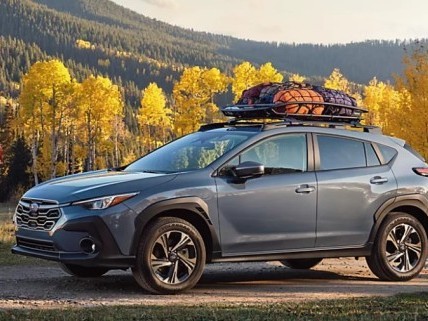
Brand new hybrid system, range over 1000km! New model Subaru Crosstrek coming in December!
RobertOct 22, 2024

Subaru Registers New EV Trademark, Signaling Strategic Shift
Kevin WongAug 8, 2025
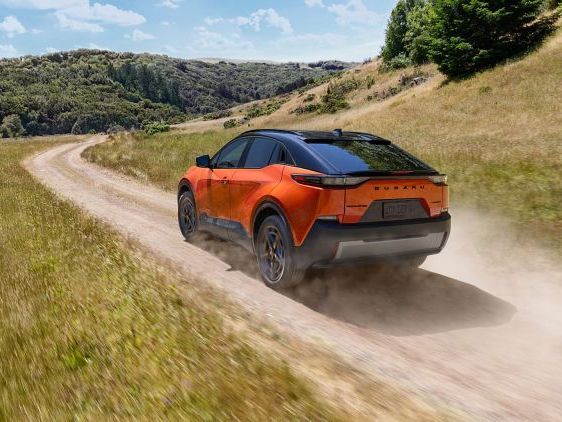
Uncharted is Subaru's first front-wheel-drive car, with a range of up to 482 kilometers.
MichaelJul 18, 2025
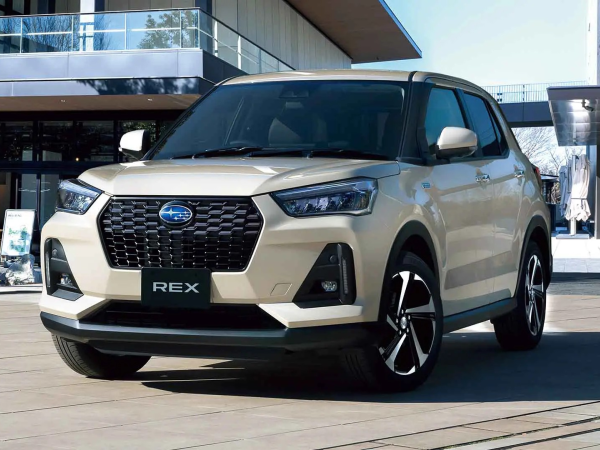
SUBARU REX Hybrid vs Nissan e-POWER: Spot the Difference!
WilliamJun 24, 2025
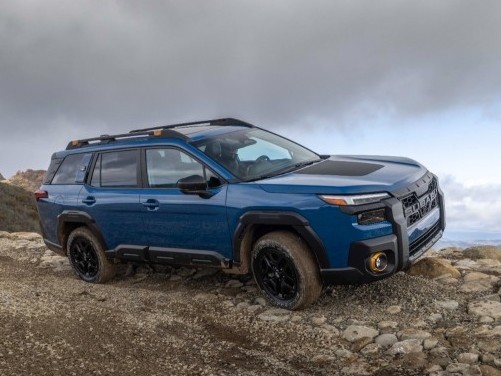
All-New Subaru Outback Debuts with SUV-Inspired Styling
JohnApr 22, 2025
View More





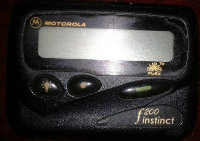








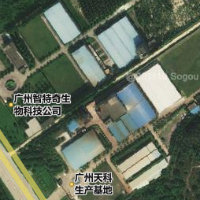


Pros
Cons